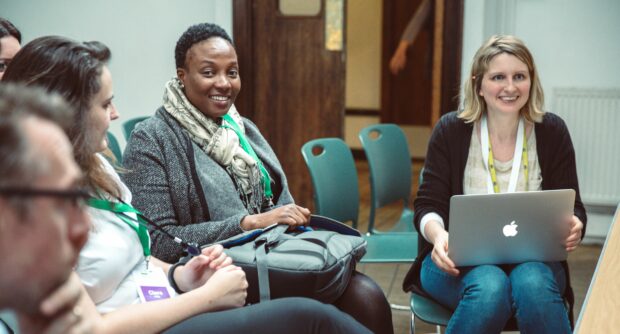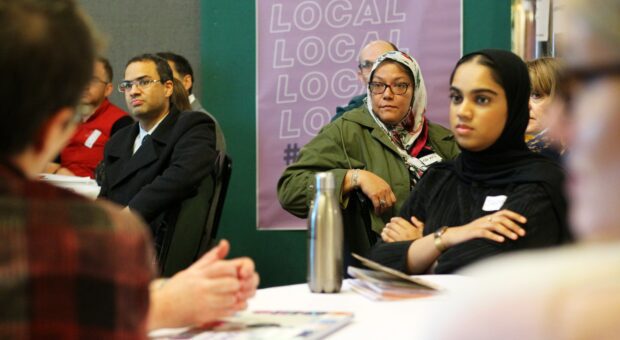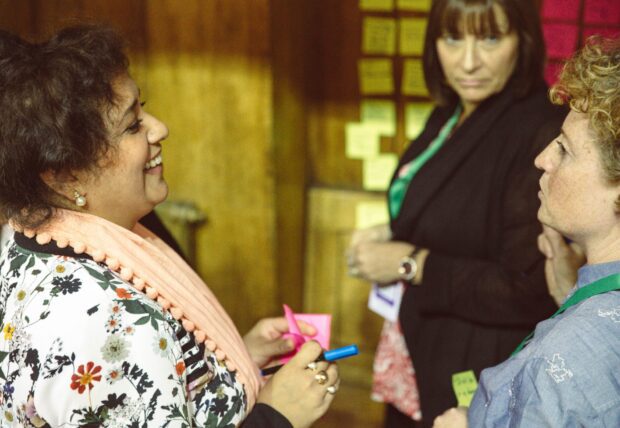
Today we’re proud to celebrate a landmark: our 100th post on the Public Policy Design blog.
Over 4-years, this blog (aimed at people who use design in government) has become a place to share practical tools, honest reflections and bold experiments.
As we look back on the first 99 entries by 78 public design practitioners and researchers, seven themes keep surfacing in our community’s writing. Understanding these patterns helps us sharpen our craft and focus our energies on what truly moves the needle for citizens.
Multidisciplinary collaboration is a fundamental
Nearly every post on team building underscores the value of bringing together diverse expertise. From ‘Do you need multidisciplinary policy design?’ to hands‑on case studies, authors describe how policymakers, designers, researchers and delivery managers can break down silos. When these professionals collaborate, they uncover richer insights and prevent handover friction. Yet many still describe battles over budgets, siloed organisations and unclear ownership. Embedding true cross‑functional practice remains a top priority for our community.

Evidence and research rigor earns trust
“Show me the evidence” is a constant refrain across the blog. From our very first post, ‘What does it mean to transform policy making?’ where we saw structured literature reviews, to other posts that dive into rapid user research interviews, data‑driven pilots and mass‑participation platforms. Rigorous research builds credibility with colleagues and ministers alike. Our collective task is to refine research methods that are both deep enough to surface key insights and light enough to keep momentum going. Our authors’ shared insistence on grounding decisions in real‑world evidence (rather than assumptions) underpins many success stories.

Embracing systems thinking & complexity
Moving beyond linear project management, our writers consistently frame policy challenges as complex systems. In ‘Systems thinking for policymaking’ and other posts, you’ll find maps of systems and feedback loops that teach us how interventions ripple across sectors like housing, health or justice. This mindset shift - from “complicated” to “complex”- reminds us to design for adaptability, monitor unintended consequences, build resilience into our work, and seek long‑term impact, and not to simply design for expediency.

Putting citizens and places first
Embedding people and places at the heart of policy is essential. Posts on co‑design workshops and local labs show how understanding peoples’ lived experience can yield legitimate, equitable outcomes. For example, ‘11 things policymakers need to improve outcomes for citizens’ offers concrete tactics for involving users from problem framing through to prototyping. Similarly, place‑based projects (whether urban regeneration pilots or rural service redesigns) demonstrate that context matters. Tailoring approaches to community realities builds trust and increases access to public services, whilst acting as a safety valve to mitigate inadvertent bias from policy teams who may not have the same characteristics as the citizens they serve.

Innovation & agile mindsets break bureaucratic gridlock
In world where policy can sometimes look like it is stuck in a rut of entrenched behaviours and legacy systems, our blog has been a champion of experimentation and rapid prototyping. In ‘Hacking the policymaking system’, contributors share how short sprints and low‑fidelity pilots can de‑risk big bets. These posts emphasize that agility isn’t a fad but a survival skill: quick feedback loops help us learn faster, correct course early and build evidence for scaling. Yet shifting culture requires leaders who tolerate experimentation and budget lines that fund iterative work.

Aligning policy with delivery for public value
Too often, brilliant policy advice stalls in implementation. A string of articles on HM Treasury’s public value framework and public services mapping have converged on one lesson: policy design and delivery must be woven together. Designers are a catalyst for helping policymakers and frontline delivery workers to join-up strategy and co‑define success metrics. This helps citizens to see real improvements and departments to hit targets faster. Posts like ‘The final frontier for policy design’ offer advice on how to close the gap between what we say we’ll do and what citizens actually experience.

Building capability and changing culture
All transformation hinges on people. Over 30 posts explore up‑skilling, including teaching design methods, creating communities of practice, and leadership models that champion diversity and inclusion. In ‘What does it take to be a Public Designer?’ the author considers what characteristics designers in government often have; these are sometimes quite different from relatively close colleagues in the world of policymaking or commercial design. Transforming how policy is made requires new skills, mindsets and a culture that rewards innovation rather than process compliance.

Here’s to the next 100
As we celebrate 100 posts, these themes (collaboration, evidence, systems thinking, citizen focus, innovation, delivery integration and capability building) form the backbone of our practice.
Thank you to our brilliant editorial board, and every author, commenter and reader who has shaped this community. Here’s to continuing our journey of designing public policy that truly works for citizens.
Join our community
We use this blog to talk about the work of the multidisciplinary policy design community. We share stories about our work, the thinking behind it and what policymaking might look like in the future. If you would like to read more, then please subscribe to this blog. If you work for the UK's government, then you can you join the policy design community. If you don't work for the UK government, then connect with us on social media at Design and Policy Network and subscribe here to be notified about our monthly speaker events to hear from influential design thought leaders and practitioners.
1 comment
Comment by john mortimer posted on
Excellent progress, please keep it up.
What I hope to see more of is that which is related to policy and relational working, but that lies outside that which is practiced only by civil servants. A huge amount of knowledge and concepts lie with those in externally, especially those that are employed on an assignment for a public sector organisation. In fact, I would say that a by engaging with us you might be able to jump ahead of where you are today, and explore that which many of us have been involved with for some years.
Multidisciplinary collaboration is a fundamental
The focus you describe for the future is very valid. This type of collaboration does not occur just by willing it to be so, but also by uncovering the reasons why it does not exist in the first place.